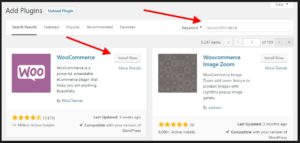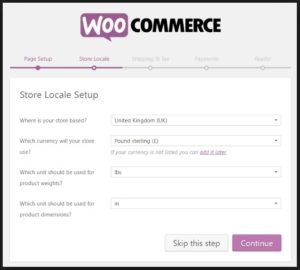 Turning your WordPress site into an e-commerce platform is a great way to find new customers and earn money. However, there are a few steps you need to take before you’re ready to open your online store. The first step, of course, is choosing a product or service to sell. What are you offering customers, and how are you going to get it to them? If it’s something relatively unique, why is it something people should spend money on? If it’s something more common, why should customers buy from you and not someone else? The way you design your page and market your business should answer all of these questions.
Turning your WordPress site into an e-commerce platform is a great way to find new customers and earn money. However, there are a few steps you need to take before you’re ready to open your online store. The first step, of course, is choosing a product or service to sell. What are you offering customers, and how are you going to get it to them? If it’s something relatively unique, why is it something people should spend money on? If it’s something more common, why should customers buy from you and not someone else? The way you design your page and market your business should answer all of these questions.
Once you know what you want to sell and you have your WordPress site up and running, the step that will take your site from a generic WordPress blog to a successful business is to choose an e-commerce platform. These come in the form of plugins that transform your site into an online store. E-commerce plugins handle all of the design features you need, including pages for shopping, payment methods, pricing and more. There are a few different popular options for you to choose from, but the most common is Woocommerce. Installing Woocommerce is not only incredibly easy, but it’s free to use, which gives it a big leg up over other plugins with comparable service that often cost a small fee to install.
 Once you’ve installed the Woocommerce plugin, it will turn your WordPress site into a functioning online store that’s incredibly simple to use, both for the customer and for you, the site manager. Because of its popularity, there are now thousands of Woocommerce-specific themes and extensions available for free and for purchase all over the web, to the point that you can very easily design your site to look and function almost any way you want. Whether you are selling ten products or ten thousand, this level of flexibility allows you to expand or streamline your site as needed with very little effort or editing. Woocommerce automatically takes care of details like currency, payments, and shipping information, and makes generating pages for carts, accounts, and shopping relatively simple.
Once you’ve installed the Woocommerce plugin, it will turn your WordPress site into a functioning online store that’s incredibly simple to use, both for the customer and for you, the site manager. Because of its popularity, there are now thousands of Woocommerce-specific themes and extensions available for free and for purchase all over the web, to the point that you can very easily design your site to look and function almost any way you want. Whether you are selling ten products or ten thousand, this level of flexibility allows you to expand or streamline your site as needed with very little effort or editing. Woocommerce automatically takes care of details like currency, payments, and shipping information, and makes generating pages for carts, accounts, and shopping relatively simple.
That being said, Woocommerce isn’t your only choice of e-commerce platform. There are hundreds of e-commerce platforms out there offering WordPress plugins for free or for purchase. But regardless of your choice, once you’ve chosen your e-commerce platform and installed your plugin, it’s time to set up your store. Any e-commerce store can be broken into two simple pieces: the front end and the back end. The front end is the part of your store that the customers see. Choosing your theme, creating content, and customizing your website to provide your customers with a quality shopping experience is all part of the front end.
 The back end is all of the hidden aspects of the business that the customers don’t think about. All of the technical and business details like how to handle payments, shipping (if necessary), taxes, coupons, sales, and discounts, etc., are all part of the back end. WordPress and Woocommerce are capable of handling almost any payment gateway you can think of, but if you go with a smaller plugin, that’s ok too. Many payment gateways come with their own plugins that will allow you to expand your payment options and give your customers more options. Both halves of your site need to be streamlined and fully functional before you can take your store online. Keep in mind that Front End details like theme and content are much easier to edit in the future than Back End functions like payment platforms or shipping methods. If time and energy are in limited supply, better to focus on making sure the Back End is tight before you open your store to the public.
The back end is all of the hidden aspects of the business that the customers don’t think about. All of the technical and business details like how to handle payments, shipping (if necessary), taxes, coupons, sales, and discounts, etc., are all part of the back end. WordPress and Woocommerce are capable of handling almost any payment gateway you can think of, but if you go with a smaller plugin, that’s ok too. Many payment gateways come with their own plugins that will allow you to expand your payment options and give your customers more options. Both halves of your site need to be streamlined and fully functional before you can take your store online. Keep in mind that Front End details like theme and content are much easier to edit in the future than Back End functions like payment platforms or shipping methods. If time and energy are in limited supply, better to focus on making sure the Back End is tight before you open your store to the public.
Once you’ve designed and tested your website, you’re ready to start selling your product! The next step from here is getting the word out and doing the marketing leg-work to drive traffic to your new e-commerce business.



1 Comment
Anonymous · September 16, 2019 at 3:00 am
Thanks, useful information 🙂